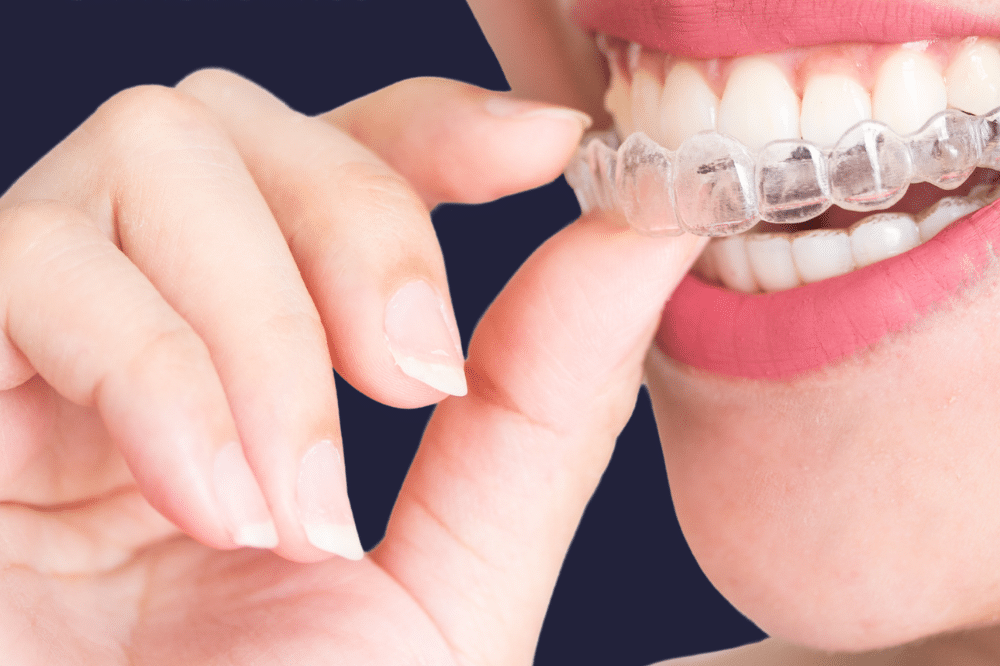Braces vs. Invisalign: Which is Right for You?

Choosing between braces and Invisalign for orthodontic treatment can be a tough decision. Both options can effectively straighten your teeth, but they come with distinct advantages and disadvantages. At Vista Orthodontics, our expert orthodontists can guide you through the differences between traditional braces and Invisalign to help you make the best choice for your lifestyle, needs, and goals. This post breaks down the benefits, drawbacks, and key considerations of both treatments to help you decide which is right for you.
Traditional Braces: A Tried and True Solution
Braces have been around for decades and remain one of the most effective solutions for straightening teeth. Made of metal or ceramic brackets and wires, braces are fixed to your teeth for the duration of the treatment.
Benefits of Braces
Effective for Complex Cases
Braces are ideal for more severe orthodontic issues, such as significant misalignments, overbites, underbites, and crowded teeth. Because they are fixed to the teeth, they can apply continuous pressure to gradually move teeth into the correct position.
No Need to Worry About Compliance
Since braces are not removable, you don’t need to worry about the temptation of taking them out or forgetting to wear them. This makes braces a great option for patients who might struggle with the discipline required for aligner treatment.
Variety of Options
While traditional metal braces are the most common, there are also ceramic braces, which are less noticeable. Braces also allow for colorful bands, making them more fun for younger patients who enjoy personalizing their orthodontic treatment.
Potential Drawbacks of Braces
Aesthetic Concerns
One of the most common concerns about braces is their appearance. Some patients may feel self-conscious about the visibility of metal braces, especially adults seeking orthodontic treatment.
Dietary Restrictions
Wearing braces requires avoiding certain foods that can damage the brackets or wires, such as sticky or hard foods. This can be a challenge for some patients.
Oral Hygiene Challenges
Braces can make brushing and flossing more difficult, as food particles can easily get trapped around the brackets and wires. You’ll need to be extra diligent with oral hygiene to avoid plaque buildup and cavities.
Invisalign: A Modern Approach to Orthodontics
Invisalign has become an increasingly popular alternative to braces. These aligners are made from clear, plastic trays that are custom-fitted to your teeth. They work by gradually shifting your teeth into place over time.
Benefits of Invisalign
Nearly Invisible
One of the biggest advantages of Invisalign is their discreet appearance. Since the trays are made of transparent plastic, they’re almost invisible, making them a popular choice for adults and teens who want to straighten their teeth without the noticeable look of braces.
Removable
Unlike braces, clear aligners are removable. This means you can take them out for eating, brushing, and flossing, allowing you to maintain your normal oral hygiene routine and eat the foods you love without restrictions.
Comfort
Clear aligners are generally considered more comfortable than braces, as they don’t have sharp edges or wires that can irritate the inside of your mouth. Additionally, aligners apply gentler pressure, making adjustments more comfortable.
Drawbacks of Invisalign
Compliance Is Key
For clear aligners to work effectively, you must wear them for 20-22 hours per day. If you don’t follow this recommendation, treatment can take longer, or your teeth may not move as intended. For patients who find it difficult to stick to this schedule, braces may be a better option.
Not Ideal for Complex Cases
While clear aligners are effective for many patients, they may not be the best choice for more complex orthodontic issues. In these cases, traditional braces may be more appropriate.
Cost
Clear aligners tend to be more expensive than braces, depending on the length and complexity of treatment. However, the benefits of convenience and aesthetics may outweigh the cost for some patients.
Which Orthodontic Treatment is Right for You?
Ultimately, the choice between braces and Invisalign depends on several factors, including your orthodontic needs, lifestyle, and personal preferences. You’ll want to make your final decision in consultation with your orthodontist, who will develop a treatment plan personalized to you.
Here are a few things to consider:
Factors to Consider When Choosing Between Braces and Invisalign
- Severity of the Issue: Braces are generally more effective for severe misalignment, while clear aligners are suitable for mild to moderate cases.
- Aesthetics: If you’re concerned about the appearance of braces, clear aligners like Invisalign offer a nearly invisible alternative.
- Lifestyle: If you prefer flexibility and don’t want to deal with food restrictions, clear aligners may be a better fit. However, if you think you’ll struggle to wear aligners consistently, braces may be more reliable.
- Budget: Clear aligners can be more expensive, but they offer benefits such as removability and comfort that may be worth the investment.
Ready to get started? Schedule your consultation today!
Still unsure whether braces or clear aligners are right for you? At Vista Orthodontics, our skilled orthodontists are here to help you make the best decision for your smile. We offer comprehensive consultations where we evaluate your orthodontic needs and guide you through all your treatment options. Contact Vista Orthodontics today at (561) 328-1555 to schedule your consultation and take the first step toward a straighter, healthier smile!
